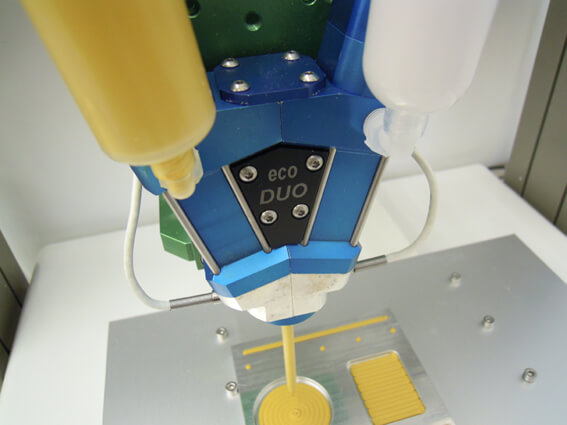Thermally conductive materials are often used to enhance the dissipation of heat from an electronic device. They are used to fill the gaps between two or more elements, such as a microprocessor and heat sink, or a battery cell and its casing in electric vehicles. As well as aiding the transfer of heat, some thermally conductive adhesives can offer structural improvement against shock or vibration.
Thermally conductive adhesives or pastes are characterised by being highly viscous and abrasive – both of which can be challenging to dispensers. A material with good thermal conductivity almost certainly means that it is highly filled; unfilled resins do not have very good thermal conductivity. Thermally conductive fillers (e.g. boron nitride) are usually quite abrasive, and result in a material which has a high viscosity and a lack of flowability.
It is imperative that the material application be free of air pockets, which will affect the efficiency of heat transfer, so it is important to be able to dispense the material with a high level of control and positional accuracy. Dispensing with too much pressure can cause materials to ‘split’, reducing their effectiveness. If lower dispensing pressures are used, this can affect throughput and productivity.
One option of taming troublesome thermal materials is to employ the use of a dispenser operating the endless piston principle. Able to provide accurate, repeatable volumetric dispensing of almost all materials, systems such as preeflow’s eco series can provide ±1% accuracy and better than 99% repeatability and dispense in quantities as small as 0.001ml.
As thermally conductive fillers are typically quite abrasive, dispensing systems can quickly show signs of premature wear. To counteract this, preeflow offers its range of eco-PENs and eco-DUOs with robust diamond-coated rotors. Capable of tripling the service life of the dispensing system, these add-ons significantly improve process reliability and reduce spare part requirements.
Categories: adhesives, dispensing, thermally conductive

